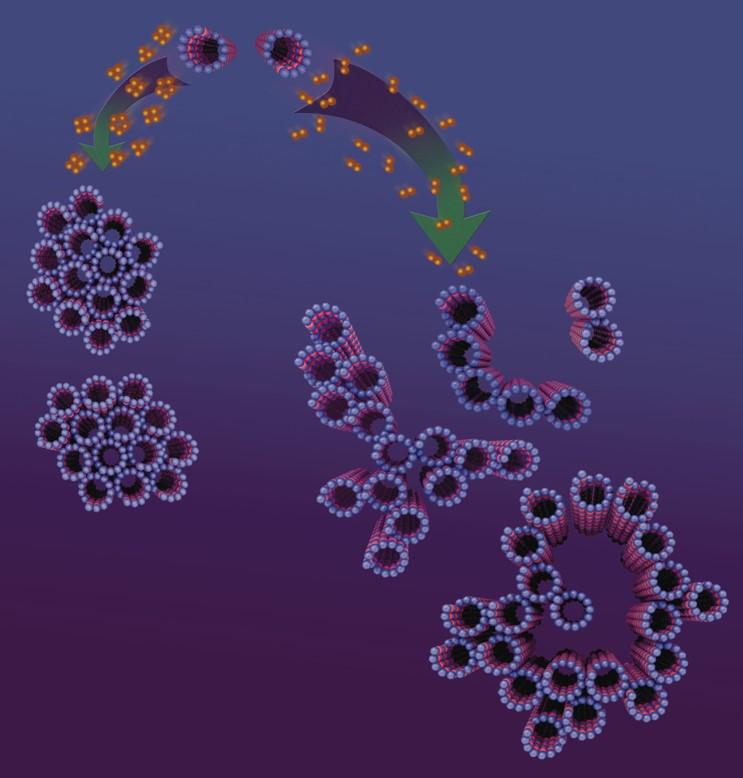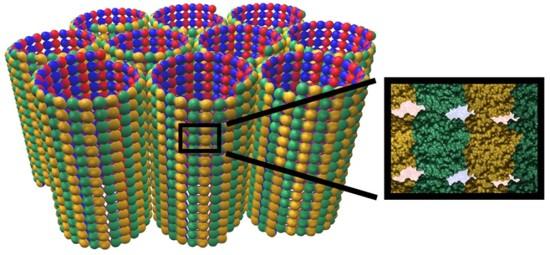We investigated both the self-assembly of microtubule (MT) into bundles (PNAS 2004, Phys. Rev. Lett. 2004) and the formation of MT alternative structures (Nature Materials 2014, ACS Nano 2021). These bundles are formed either by osmotic stress (Phys. Rev. Lett. 2004, Biophys. J. 2005) or by the association of MT with multivalent cations (e.g. spemine or divalent cations, PNAS 2004, Faraday Discuss. 2013). The association of MT with positively charged molecules or cations induces bundling of various sizes and degrees of order.

Depending on conditions, a variety of novel nanoscale alternative tubulin assemblies can form when MT interact with multivalent ions. These assemblies include hexagonal bundles of inverted tubulin tubules (Nature Materials 2014) or necklace-like microtubule – bundles (PNAS 2004). In the inverted tubulin tubules, the outside surface corresponds to the inner surface of the MT tubules. These phases provide insight into the association of charged macromolecules and the interactions between tubulin proteins and the forces that stabilize them in microtubules and other assemblies.

We have also found that osmotic stress induces microtubules bundling due to depletion attraction forces, however, in appropriate conditions osmotic stress can deform MT to assume a non-circular cross-section (Phys. Rev. Lett. 2004, Biophys. J. 2005). We then investigated how different isoforms of the MT-associated proteins tau modifies the MT structure, stability and the interaction between microtubules (Biophys. J 2009 and PNAS 2015).

